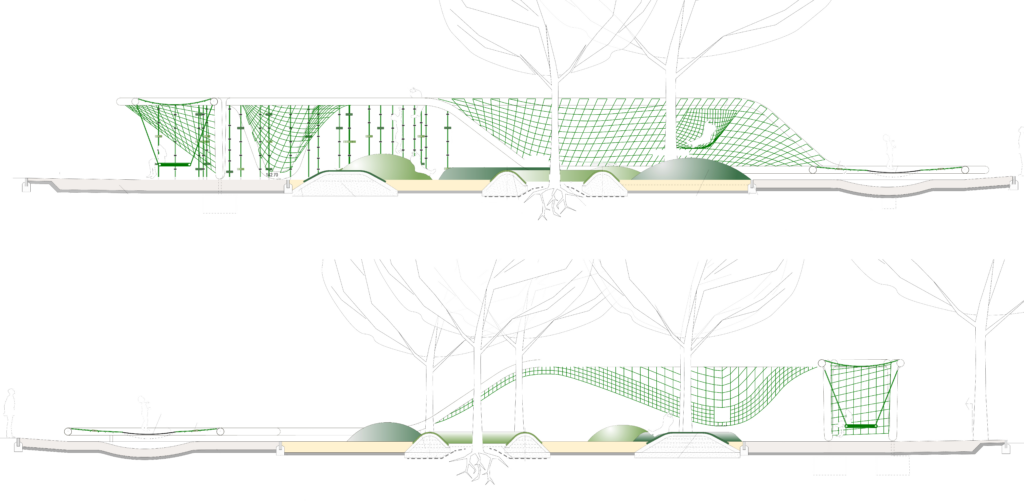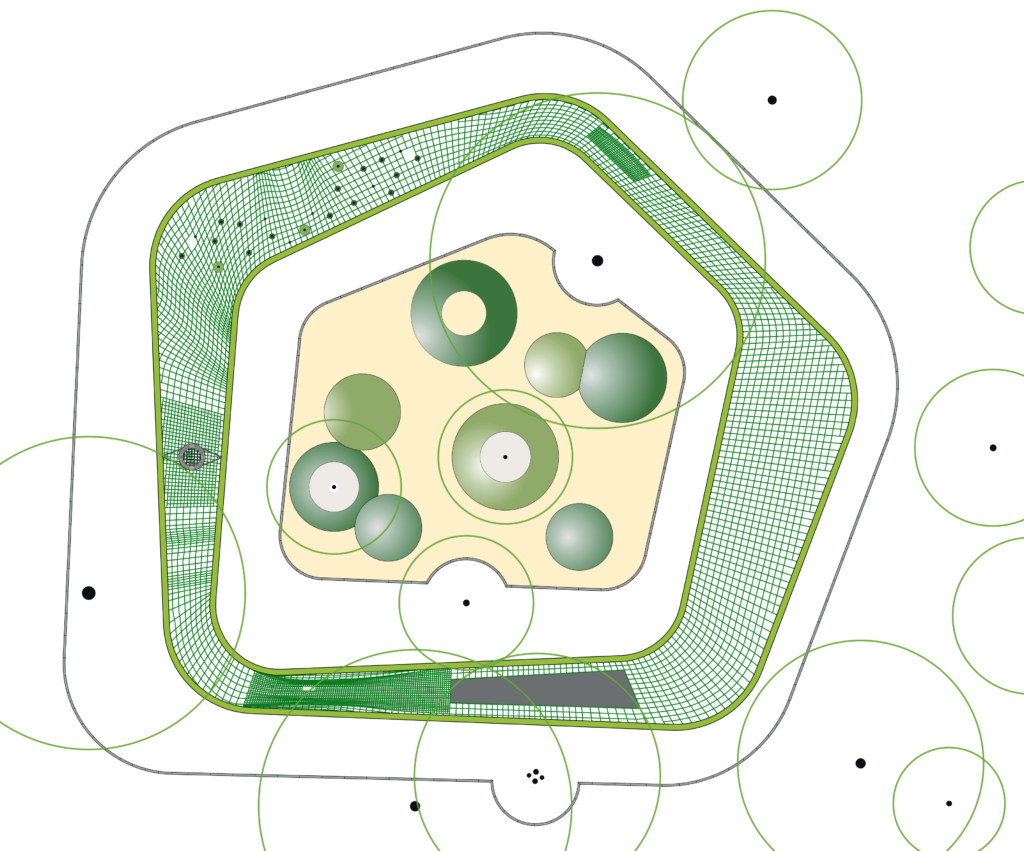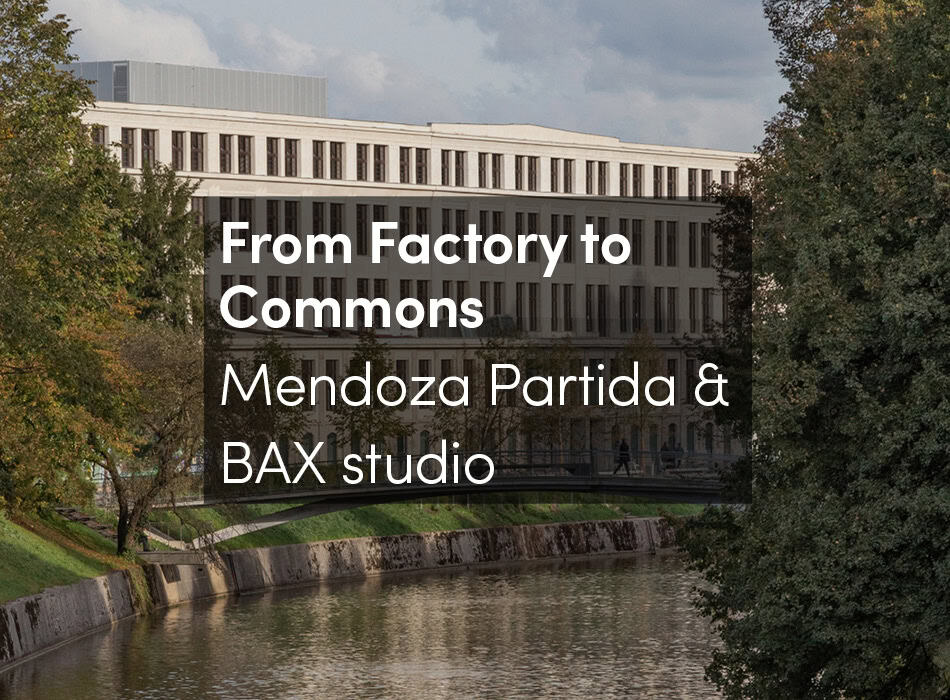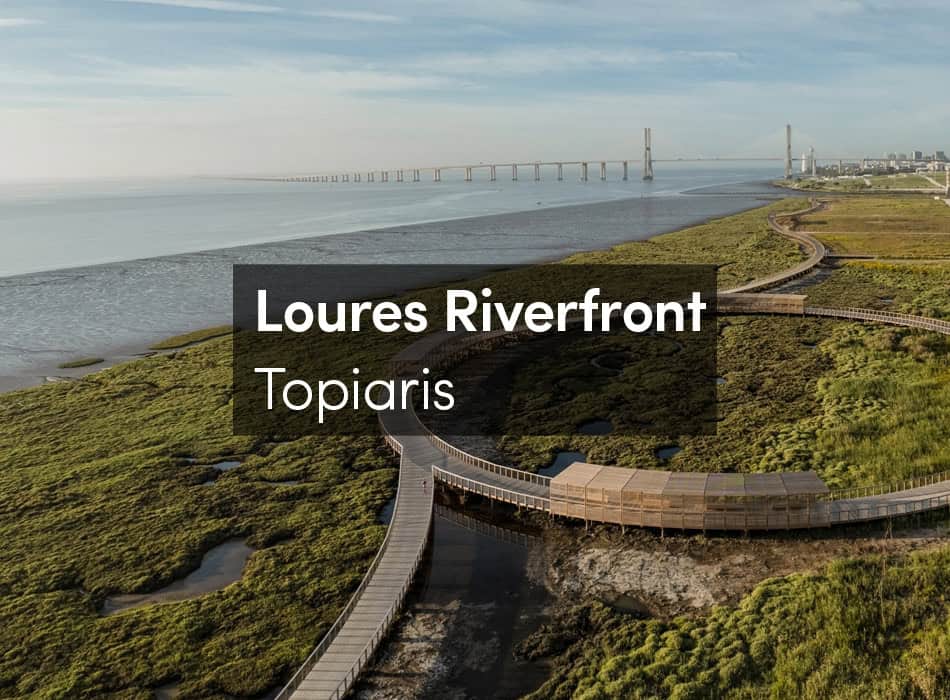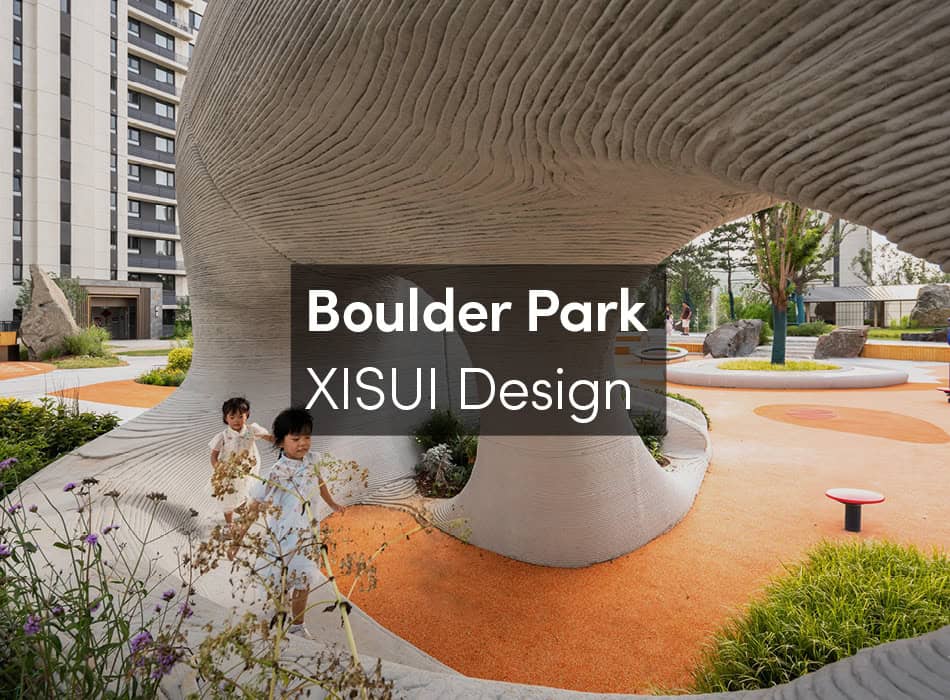The retrofitting of the “Schulberg” in Wiesbaden, Germany, has created an extraordinary new public space. The playground’s outstanding architectural design, which overlooks the city center of Wiesbaden, attracts people of all ages and ethnic backgrounds to gather and communicate through play.
The heart of this public space is an artistically and ambitiously designed playground centered around a large spatial sculpture. Together with the adjacent reconstructed Kunsthaus (a museum and artist studios), the monument of the former synagogue, and the restored Römertor (a Roman aqueduct from the 3rd century), the Schulberg has become a catalyst for revitalizing this previously neglected area. Thanks to its exceptional and sculptural design, the new playground highlights both the urban significance of the site, overlooking historic Wiesbaden, and offers an attractive, complex range of play activities.
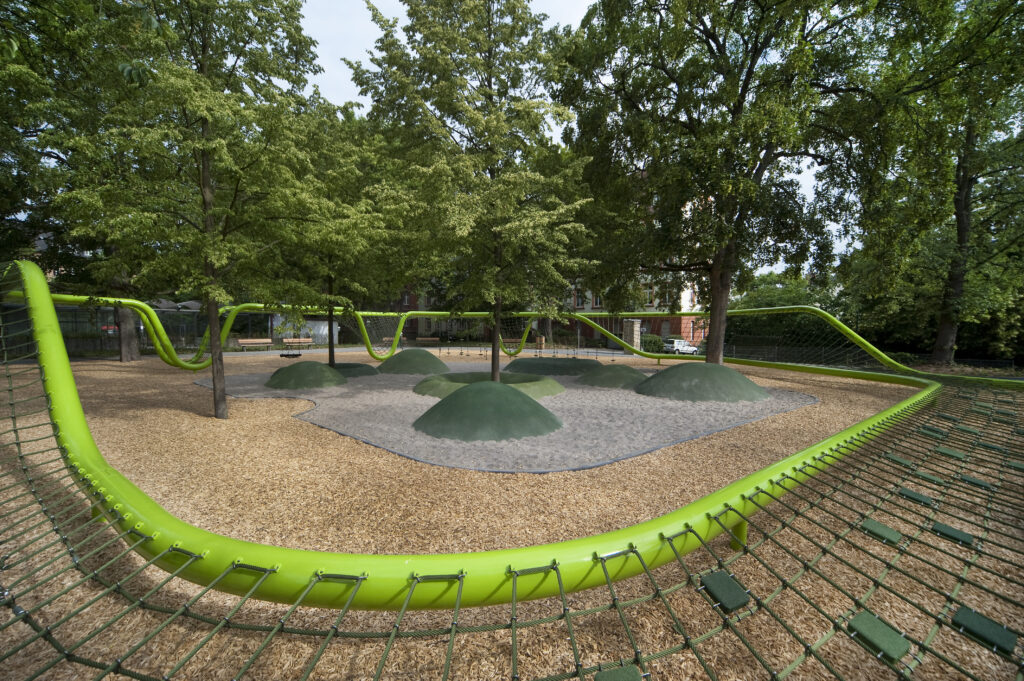
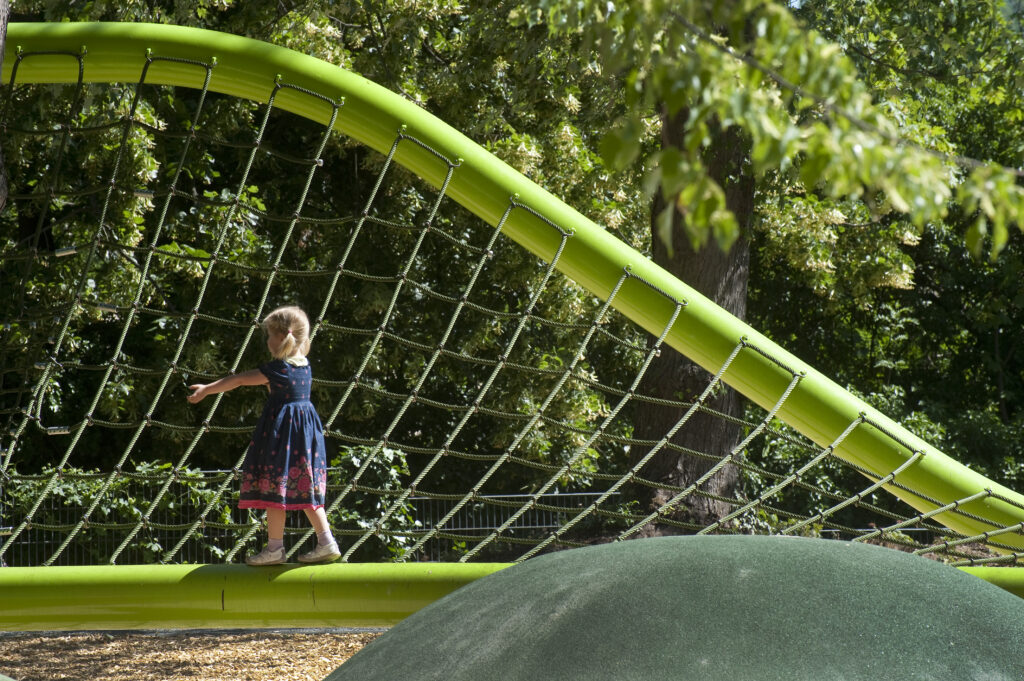
Three main elements define the playground: the primary feature is a spatial sculpture made of two green steel pipes that wind and float among the existing trees, varying in height and distance. A tensioned climbing net weaves through this structure, creating a continuous sequence of play activities for children and teens. The pentagonal shape of the structure is inspired by the historic layout of Wiesbaden, while the ups and downs of the pipes reflect the urban landscape, forming entrance points and viewing platforms.
The entire sculpture spans 35 meters (115 feet) in diameter, with the inner ring measuring 88 meters and the outer ring 108 meters. In some places, the steel construction cantilevers up to an impressive 23 meters. The structure does not exceed 3 meters in height to comply with playground safety regulations. Within the loop, there are six main play stations. In the liane garden, children can climb or swing among the vines, which vary in difficulty. Rubber granulate plates, some of which rotate, assist with climbing or serve as resting platforms. In the lowest part of the structure, these plates allow users to traverse the net by jumping from one to another.
Other stations include bouncing membranes, a tunnel, a nest swing, a sliding membrane, and a steep climbing wall. The bright, eye-catching green color of the sculpture complements the surrounding trees and the nearby reddish brick buildings.
The second element of the playground is a modeled topography enclosed by the climbing sculpture. Small hills and rings made of soft green rubber granulate, surrounded by sand, frame the trees and offer play spaces for younger children, as well as meeting or resting areas for teens and parents. The third element is a wide boulevard surrounding the playground, providing benches for parents and the elderly who come to watch their children or enjoy the stunning view of Wiesbaden. An anthracite-colored, elegantly curved curb follows the pentagonal shape of the playground, separating it from the boulevard.
